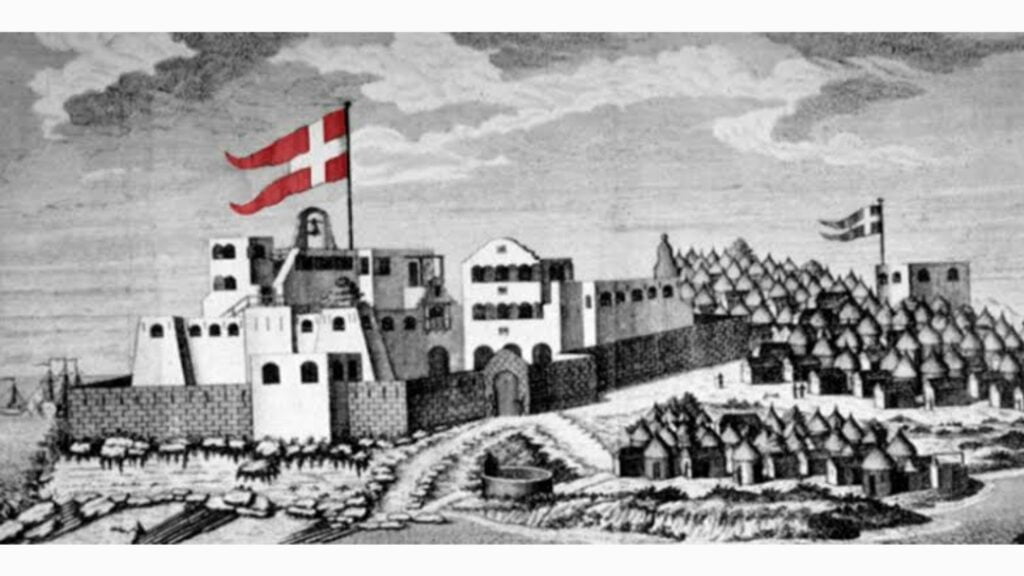
In this blog’s post, we will discuss Missionaries’ works and the history of the Tranquebar Mission. In the 18th century, Protestant missionaries started coming to India. They first came to Tamilnadu. The first one to venture this was by the Lutherans.
During the 17th century, European countries other than Portugal established their colonies in India. The newcomers were Protestants. Dutch established their centers at Pulicat in 1609, Sadras in 1647, Nagapatam in 1660.
British established themselves at Musalipatam in 1622, Madras in 1639, Cudallore in 1683, Calcutta in 1689. Denmark established their center at Tranquebar in 1620 and Serampore in 1676.
The man who conceived the idea of sending the Protestant Mission was King Frederick IV of Denmark. He authorized his court chaplain to find suitable persons to sent to India as missionaries.
The court chaplain approached his friends in Germany to find some suitable people. Two theological students undergoing training at Halle University in Germany identified.
They were Heinrich Plutschau (1677-1746) and Bartholomew Ziegenbalg (1683-1719). They studied under Prof. August Hermann Francke. They were the products of the revival movement; called Pietism which began in Germany during the last part of the 17th century.
Royal Missionaries
They brought to Denmark and ordained. Further, they sent to Tranquebar as “Royal Missionaries” funded by the Emperor. They reached Tranquebar on 9th July 1706. Tranquebar lies 200 miles South of Madras and about 20 miles North of Nagapatnam. They had to wait for a long time.
The authorities did not advise about the coming of the missionaries. The report given by the Captain of the ship was also not favorable.
He personally disliked the missionaries. Missionaries showed the authorities the letter of the Danish King. The authorities proposed them to teach in the Danish School.
But the missionaries refused to take up the job instead of mission work. Finally the commandant gave them a reluctant permission.
The missionaries followed the officials to the market place but they left there alone. After a long time, a junior officer took pity on the missionaries and he found them a house in the Portuguese quarter of the town (where the Eurasians lived).
You can read about Serampore mission
Tranquebar Mission
The missionaries started learning Portuguese and Tamil. They learned Portuguese for the reason that this was the common language of the Eurasians and the trading stations. Tamil was the language of the native people.
They also found some German soldiers working in the Danish East India Company troops. The missionaries started services in the German language. They also started to work among the domestic servants of the Eurasians.
They requested the commandant to give leave for two hours to the servants. So, that they could attend Christian teaching. This effort was only partly possible. The first converts were from this group.
The missionaries founded an orphanage. They adopted orphan children. These children baptized and brought up as Christians.
Along with that Portuguese and Tamil Schools also started. From the beginning onwards the missionaries concentrated on education. Ziegenbalg was a gifted learner of languages.
He learned Tamil very fast. So, he concentrated on Tamil while Plutschaw concentrated on Portuguese. Ziegenbalg entered into religious dialogue with Hindus in Tamil. This drew the attention of the people.
He also started writing in Tamil. He produced the translation of Luther’ Short Catechism for catechizing small children.
Then he translated the Sermons, tracts, and school books. Within two years of arrival, he started translating the New Testament. He published it in 1715. This was a novel attempt. No one before had tried such a venture.
The publication was made easier by the gift that he got from SPCK in the form of a printing press in 1712. Further, he translated the Old Testament up to Ruth.
The first Tamil hymn book was published in 1728. He also coined the Tamil German dictionary. He also wrote in German the results of his inquiries into Hinduism as found in South India.
Problems of Tranquebar Mission

The missionaries encountered a number of problems. Most of them were with the Danish authorities. There were frequent collisions. Commander wanted the mission as a subdivision of the Danish East India Company.
But missionaries said no. They did not want to be subjected to the official chaplain. They also pointed out that local people hesitated to come to the Danish Church.
So, they asked for a local Church. Now the commander refused their request. Missionaries threatened to write to the King. They also wrote to the Chancellor of the Danish Church regarding the whole episode.
The commander viewed this action of the missionaries as a rebellion. In 1708 Ziegenbalg demanded justice in a letter written to the commander for a certain widow.
The enraged commander got Ziegenbalg arrested and kept him in solitary confinement. Plutschaw and other members of the missions harassed in other ways. Public opinion turned against Commander Hassius.
As a result, the Commander and his wife visited Ziegenbalg at the prison and they entered into a compromise. Ziegenbalg was released from prison.
Methodology of Tranquebar Missionaries
The methodology of the Tranquebar missionaries included the translation of the Bible into the vernacular language. They also preached the Gospel in the language of the people.
Charity schools established in order to educate the people. Education oriented to make the people able to read and write by themselves so that they would be able to get to know the Gospel truths through their own reading.
They also engaged in training the next generation and they prepared workers for Church and Schools. They printed Christian literature and used the house to house distribution of them.
Weekly conferences of the missionaries and the Indian workers arranged to discuss the problems and outcomes of the mission works.

